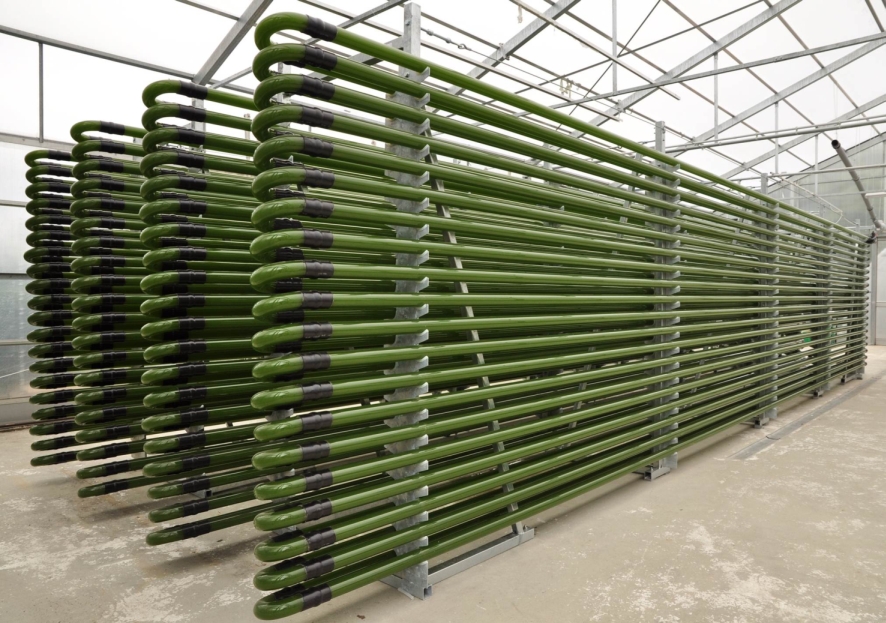To maximize efficiency, a product (or other entity) must be scalable. A modularity of components within the overall assembly helps to ensure a smooth transition from micro-economic segments to mass-scale adoption with a relatively seamless production ramp-up. An entity that can transition across platforms with minimal distortion can remain functionally stable within a fluctuating field.
Breaking food down into its basic functional components—which may then be flexibly obtained from multiple sources—reduces waste in the form of unutilized components of the harvested organism and components that aren’t metabolized by the consuming organism. Reducing waste in this sphere achieves a corresponding reduction in the use of the land, water, and energy required to produce the same amount of consumable calories and nutrients. A strain of algae that has been genetically modified to efficiently generate lipids and proteins (like the one used in the 0.10 prototype contained herein) grown in a bioreactor can produce a much greater calorie yield per unit of water/ land/carbon expended.

The prevailing trend towards the retrograde shamanism of the organic and “all natural” (a food trend that also has reverberations throughout art and culture) is the ideology of inefficiency: a mindset dedicated to seeing the world as a collection of “things” (be they wholesome or unwholesome) rather than quantities, functions and interrelationships. The insistence that a tomato be grown from an unmodified, less efficient strain using pre-modern agrarian methods is a recipe for feudalism. It naively assumes a “tomato” is a fixed “thing” and not a malleable function that is necessarily in a constant process of “modification.” The “all natural” trend is essentially concerned with maintaining categorical boundaries to the detriment of efforts to reduce the land, water, and energy footprint of humans’ caloric intake.

Most present-day economic-caloric energy¹ is spent on reformulating existing things within preexisting parameters (rather than reformulating at the level of the categories themselves). Like art, perpetual reformulation is a form of waste or excess. If we can’t completely eliminate waste and the drive towards perpetual reformulation (work for work’s sake), we can at least fold this aesthetic-economic expenditure into other things that we likewise can’t eliminate, such as food and medicine. Here this additional expenditure can sit as a thin aesthetic layer atop the functional one (0.10 percent flavor by weight)—a little extra je ne sais quoi to eventually be reabsorbed into our metabolic processes. Reduce waste by directing energy expenditure towards avenues where it can be recaptured. After all, the immense economic effort involved in reformulating the possible instantiations of the already existent is also an ongoing mass-scale reformulation of the atmosphere.
¹ Economic-caloric energy is the energy resources spent during the process of economic production—often in the form of petroleum consumption—including the metabolic energy of working humans, which has its own overlapping energy requirements.
SEAN RASPET produces liquid formulations and abstract systems that circulate within the mass economy and the space of finance. Previous projects have included artificial flavor and fragrance formulations, cleaning products, new food prototypes, synthetic DNA tracking gel, and an interlinked system of sublets. For the 9th Berlin Biennale Raspet created an exclusive limited edition of 2000 Soylent 0.10 samples for the cover of the publication.
IMAGE: Sean Raspet × Soylent R&D, Soylent 0.10, complete nutrition algae-derived paste (prototype), Pentagon-1/OMNI flavor formula
